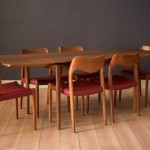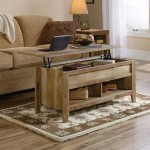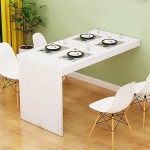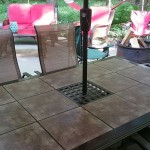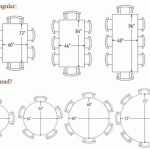How To Remove Candle Wax From a Wood Coffee Table
Candle wax spills are a common household occurrence, especially on surfaces like a wood coffee table. The aesthetic appeal and functionality of a wood coffee table make it a central gathering place, increasing the likelihood of wax making its unwanted presence. While seemingly a minor issue, dried candle wax can be difficult to remove without potentially damaging the wood finish. Several methods, employing varying degrees of heat and gentle abrasion, can be utilized to safely and effectively remove wax, restoring the coffee table to its original state.
The key to successful wax removal lies in understanding the properties of both the wax and the wood finish. Candle wax is typically composed of paraffin, beeswax, or soy wax, all of which are relatively soft and have a low melting point. Wood finishes, on the other hand, vary widely in their composition and durability. Some common finishes include varnish, lacquer, polyurethane, and oil-based finishes. Each finish reacts differently to heat, solvents, and abrasion. Therefore, careful consideration must be given to selecting the appropriate removal method to avoid damage such as scratching, discoloration, or stripping the finish.
Before commencing any wax removal procedure, it is crucial to identify the type of wax and the type of finish on the wood coffee table. This information will help determine the most suitable method and minimize the risk of damage. If the type of finish is unknown, it's advisable to test the chosen removal method on an inconspicuous area of the table, such as underneath or on a leg. This "patch test" will reveal any potential adverse reactions and allow for adjustments before treating the entire affected area.
The Iron and Cloth Method
One of the most widely recommended and effective methods for removing candle wax from wood surfaces involves the use of an iron and a clean cloth. This method leverages the principle of re-melting the wax and transferring it to an absorbent material, leaving the wood surface clean. The key to success with this method is to control the heat and use a protective barrier between the iron and the wood.
Begin by gathering the necessary materials: a clothes iron (preferably one without steam vents), a clean, soft cotton cloth (old t-shirts or sheets work well), and a dull scraper or plastic spatula. Ensure the cloth is free of any dyes or prints that could transfer to the wood surface when heated.
Place the cloth directly over the hardened candle wax. Set the iron to a low or medium heat setting. Avoid using the steam setting, as moisture can potentially damage some wood finishes. Gently press the heated iron onto the cloth-covered wax. Move the iron in a circular motion, allowing the heat to melt the wax, which will then be absorbed into the cloth.
Periodically lift the cloth and inspect it. You will see the wax transferring from the wood to the cloth. Shift the cloth to a clean area as needed to ensure continued absorption. Repeat the process until all the visible wax has been absorbed. Avoid holding the iron in one spot for an extended period, as excessive heat can damage the wood finish. If necessary, use a clean portion of the cloth and repeat.
Once the majority of the wax has been removed, there may be a thin film or residue remaining on the surface. Take a clean area of the cloth and gently wipe the area to remove any remaining residue. If necessary, lightly dampen the cloth with water, ensuring it is not excessively wet, and wipe the area again. After wiping, allow the area to air dry completely.
In some cases, stubborn wax residue may persist. If this occurs, use a dull scraper or plastic spatula to gently scrape away the remaining wax. Hold the scraper at a shallow angle to the wood surface and use light pressure to avoid scratching the finish. This step should be performed with extreme care, especially on delicate finishes. The goal is to dislodge the last remnants of wax without causing any damage. After scraping, wipe the area with a clean, slightly dampened cloth to remove any dislodged particles.
Finally, after the area has dried, inspect it for any signs of discoloration or damage. If the finish appears dull or hazy, a wood polish or furniture wax can be applied to restore its shine. Follow the manufacturer's instructions for application and buffing. In most cases, the iron and cloth method will effectively remove candle wax from a wood coffee table without causing any damage, leaving the surface clean and restored.
The Hair Dryer Method
An alternative to the iron and cloth method is using a hair dryer to melt the wax. This method provides a gentler heat source and can be particularly useful for delicate wood finishes or intricate surfaces where an iron might be difficult to maneuver. Similar to the iron method, the goal is to soften the wax and absorb it with a cloth.
Gather the necessary materials: a hair dryer, a clean, soft cotton cloth, and a dull scraper or plastic spatula. It's important to use a hair dryer with adjustable heat settings to control the temperature and prevent overheating the wood.
Hold the hair dryer several inches away from the hardened candle wax. Set the hair dryer to a low or medium heat setting. Direct the heat onto the wax, moving the hair dryer in a sweeping motion to evenly distribute the heat. Avoid holding the hair dryer in one spot for too long, as this could potentially damage the wood finish.
As the wax begins to soften, use the clean cloth to gently dab and absorb the melting wax. Continue to apply heat and absorb the wax, shifting the cloth to a clean area as needed. The hair dryer method is generally slower than the iron method, but it allows for more precise control over the heat, making it a safer option for delicate finishes.
Once the majority of the wax has been removed, there may be a thin film or residue remaining. Moisten a clean portion of the cloth with water and gently wipe the area to remove any remaining residue. Be careful not to saturate the wood with water, as this could cause damage. After wiping, allow the area to air dry completely.
If stubborn wax residue persists, use a dull scraper or plastic spatula to carefully scrape away the remaining wax. Hold the scraper at a shallow angle and use light pressure to avoid scratching the finish. This step should be performed with caution, especially on delicate finishes. After scraping, wipe the area with a clean, slightly dampened cloth to remove any dislodged particles.
After the area has dried, inspect it for any signs of discoloration or damage. If the finish appears dull or hazy, a wood polish or furniture wax can be applied to restore its shine. Follow the manufacturer's instructions for application and buffing. The hair dryer method provides a gentle and controlled approach to wax removal, making it a suitable option for a variety of wood finishes and intricate surfaces.
The Freezing Method
Another approach to removing candle wax from a wood coffee table is to freeze the wax, making it brittle and easier to chip away. This method is particularly useful for thick deposits of wax or for wax that has adhered strongly to the wood surface. However, it's essential to use caution when applying cold temperatures directly to wood, as rapid temperature changes can potentially damage some finishes.
Gather the necessary materials: an ice pack or a bag of ice cubes, a plastic bag to contain the ice, a clean, soft cloth, and a dull scraper or plastic spatula. Avoid using loose ice directly on the wood surface, as melting ice can cause water damage. Place the ice pack or ice cubes inside the plastic bag to prevent water leakage.
Place the plastic bag containing the ice directly on the hardened candle wax. Allow the ice to remain in place for several minutes, allowing the wax to become thoroughly chilled and brittle. The duration will depend on the thickness of the wax deposit. Check the wax periodically to assess its brittleness. The wax should become noticeably harder and more easily fractured.
Once the wax is adequately frozen, remove the ice pack. Use the dull scraper or plastic spatula to gently chip away at the frozen wax. The wax should break into small pieces, making it easier to remove. Work slowly and carefully to avoid scratching the wood finish. Hold the scraper at a shallow angle and use light pressure.
After removing the majority of the frozen wax, there may be small fragments or residue remaining. Use a clean, soft cloth to wipe away any remaining pieces. If necessary, lightly dampen the cloth with water, ensuring it is not excessively wet, and wipe the area again. After wiping, allow the area to air dry completely.
If stubborn wax residue persists, a gentle solvent like mineral spirits can be used to dissolve the remaining wax. However, it's crucial to test the solvent on an inconspicuous area of the table first to ensure it does not damage the finish. Apply a small amount of mineral spirits to a clean cloth and gently wipe the affected area. Avoid saturating the wood. After wiping, allow the area to air dry completely.
After the area has dried, inspect it for any signs of discoloration or damage. If the finish appears dull or hazy, a wood polish or furniture wax can be applied to restore its shine. Follow the manufacturer's instructions for application and buffing. The freezing method offers a non-heat approach to wax removal, making it a suitable option for certain types of wax and wood finishes, but requires careful execution to avoid potential damage from rapid temperature changes or solvent use.

How To Remove Candle Wax Stain From A Light Colored Wood Table Hometalk

How To Easily Remove Candle Wax From Furniture Today S Homeowner

How To Remove Candle Wax Stain From A Light Colored Wood Table Hometalk

How To Remove Candle Wax From Wood 4 Easy Methods Prudent Reviews
How Would You Clean Wax Off A Wrought Iron Table Citronella Candle Melted All Over My Outdoor And Down The Base It S In Cravks Crevices Of

How To Remove Furniture Wax From Hg Provides The Best Tips
How Would You Clean Wax Off A Wrought Iron Table Citronella Candle Melted All Over My Outdoor And Down The Base It S In Cravks Crevices Of

4 Ways To Dewax A Table Wikihow
How Would You Clean Wax Off A Wrought Iron Table Citronella Candle Melted All Over My Outdoor And Down The Base It S In Cravks Crevices Of

Haley S Hints Safely Remove Candle Wax From Wood Furniture Youtube


